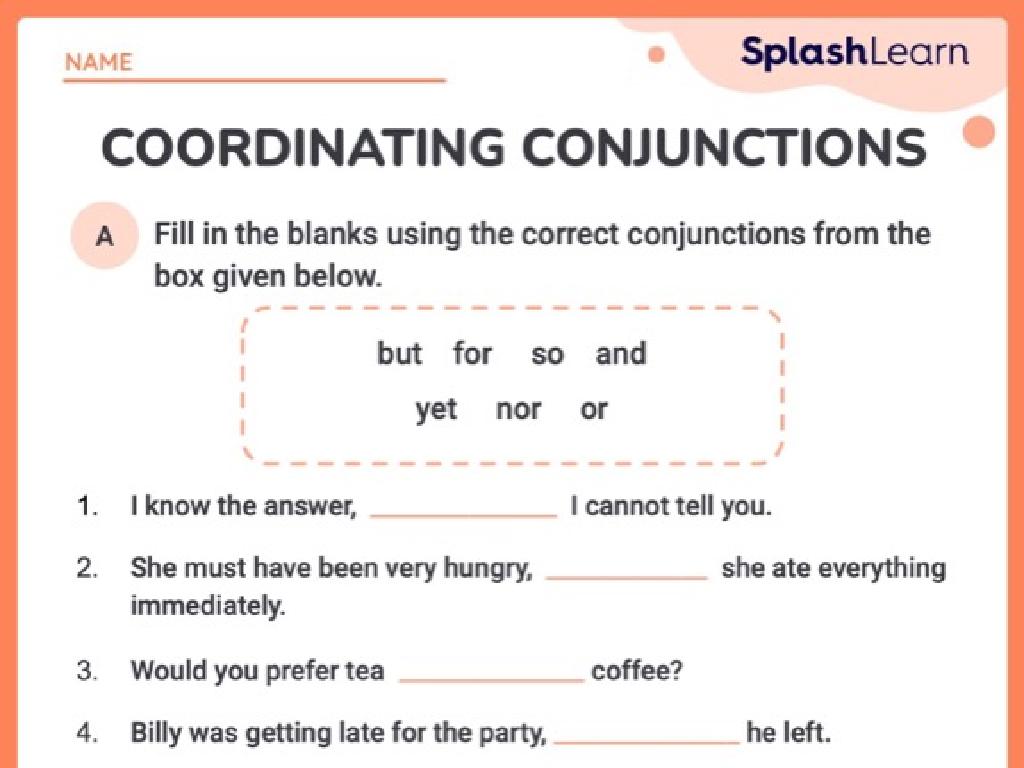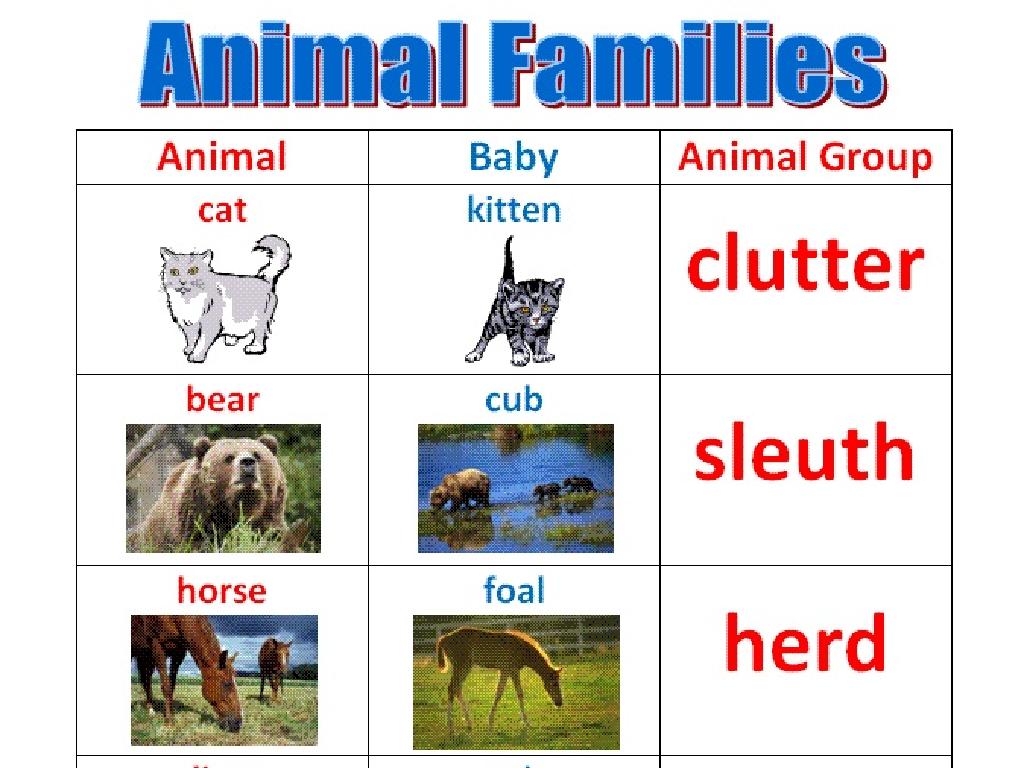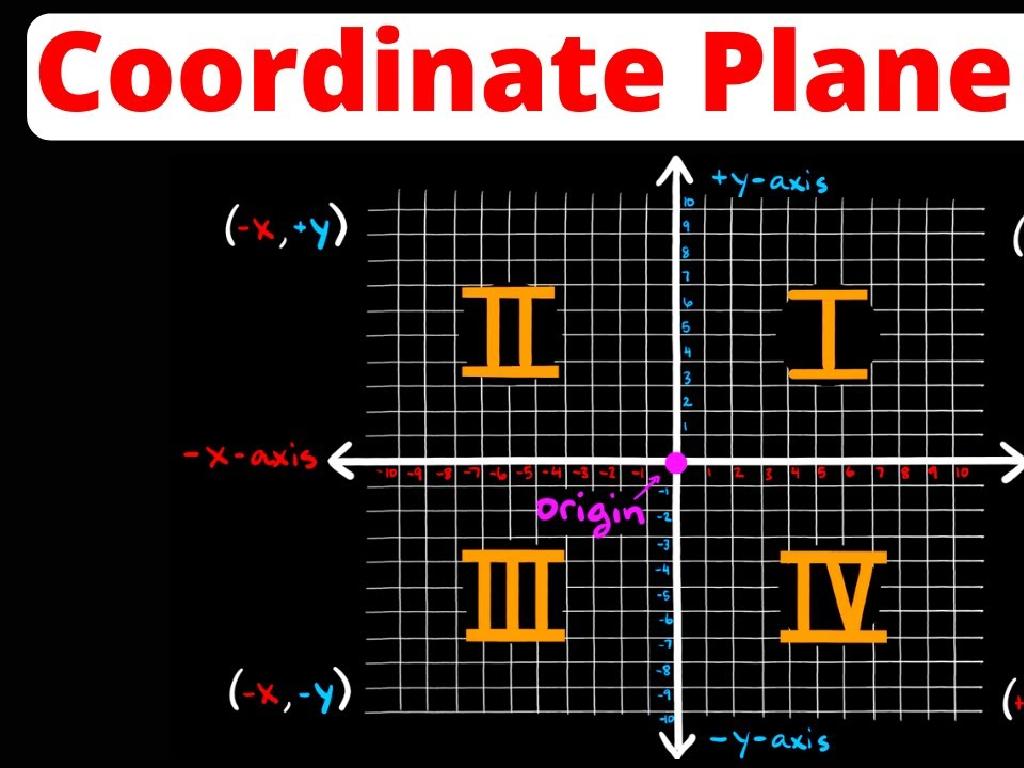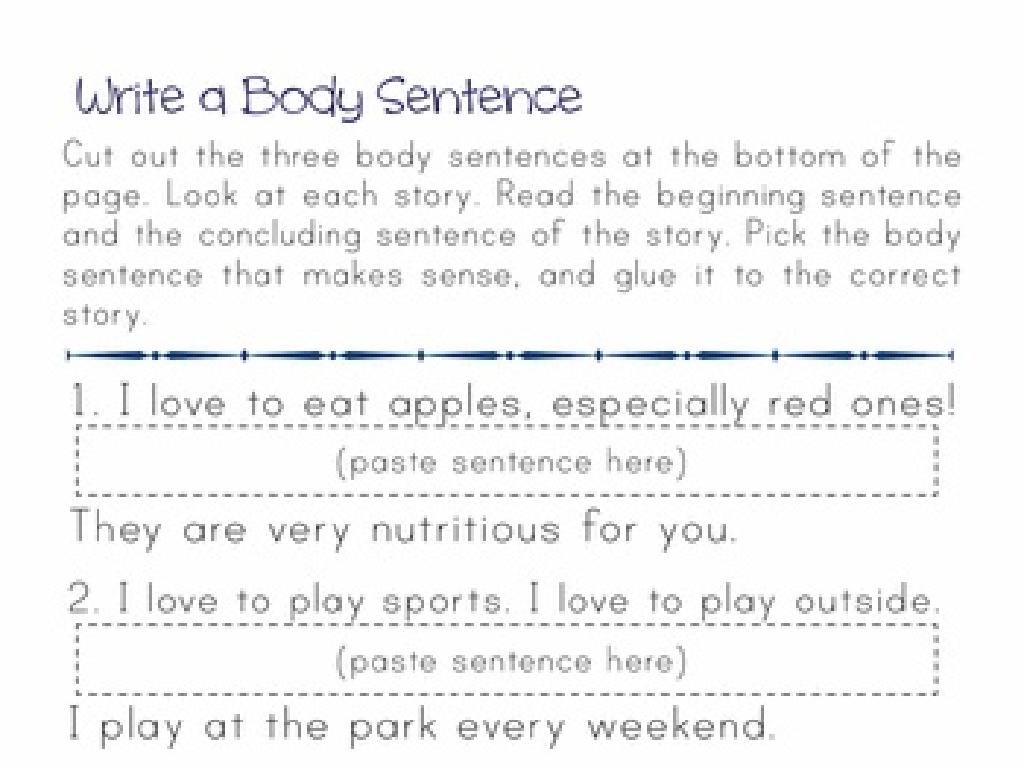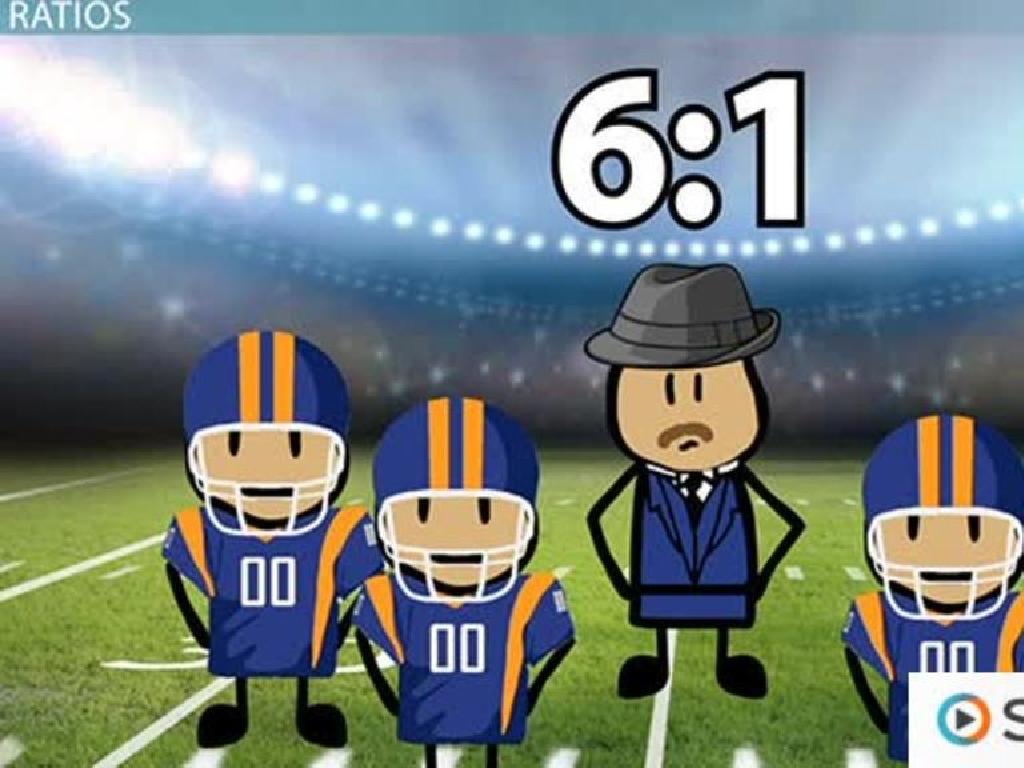To Have: Use The Correct Form
Subject: Language arts
Grade: Third grade
Topic: Verb Tense
Please LOG IN to download the presentation. Access is available to registered users only.
View More Content
Mastering the Verb ‘To Have’
– Learn about ‘to have’
– Using ‘to have’ in tenses
– ‘I have a pet’, ‘I had a cookie’, ‘I will have a test’
– Why correct form matters
– Using the right tense helps us communicate clearly
– Practice examples
– We’ll do fun activities to practice ‘to have’
|
This slide introduces the verb ‘to have’ and its significance in different tenses. Start by explaining that ‘to have’ is an irregular verb and show its forms in the present, past, and future tenses. Emphasize the importance of using the correct form to make clear when something happens – whether it’s now, happened already, or will happen in the future. Engage the class with examples and interactive activities where they can practice using ‘to have’ in sentences. This will help them grasp how verb tenses affect the meaning of sentences and improve their overall communication skills.
Understanding Verbs: ‘To Have’
– Verbs show actions or states
– Like ‘run’, ‘jump’, or ‘eat’
– ‘Have’ is a common action verb
– We use ‘have’ a lot in speaking and writing
– Verbs change with time
– Past, present, and future actions need different verb forms
– ‘Have’ has different forms
– ‘Has’, ‘had’, and ‘will have’ are forms of ‘have’
|
This slide introduces the concept of verbs to third-grade students, focusing on the verb ‘to have’. Begin by explaining that verbs are words that show what someone or something does or is. Use familiar verbs like ‘run’, ‘jump’, and ‘eat’ as examples before introducing ‘have’. Highlight that verbs can change form to indicate when the action is happening past, present, or future. For example, ‘have’ becomes ‘has’ in the third person singular present tense, ‘had’ in the past tense, and ‘will have’ when talking about the future. Encourage students to think of sentences using different forms of ‘have’ to reinforce the concept.
Understanding the Verb ‘To Have’
– ‘To have’ indicates ownership
– It tells us what someone owns
– Describes experiences or relations
– It can also describe things we’ve done or people we know
– Example: ‘I have a cat.’
– Shows possession of one cat
– Practice: ‘She has a new book.’
– Use ‘has’ because ‘She’ is third person singular
|
The verb ‘to have’ is an important part of English grammar, used to show possession, experiences, or relationships. It’s crucial for students to understand how to use this verb correctly in different contexts. Start by explaining the concept of ownership, then move on to its use in describing experiences, such as visiting places, or relationships, like family ties. Provide clear examples and encourage students to create sentences using ‘to have’ to describe things they own or experiences they’ve had. This will help solidify their understanding of the verb’s usage in various scenarios.
Using ‘Have’ and ‘Has’
– ‘Have’ with I, you, we, they
– ‘Has’ with he, she, it
– Example: I have a pencil
– Use ‘have’ when talking about yourself or many people.
– Example: She has a pencil
– Use ‘has’ when talking about someone else or one thing.
|
This slide introduces the present tense forms of the verb ‘to have.’ It’s crucial for students to understand that ‘have’ and ‘has’ are used differently based on the subject. ‘Have’ is used with the pronouns I, you, we, and they, while ‘has’ is used with he, she, and it. Provide clear examples to illustrate the use of ‘have’ and ‘has’ in simple sentences. Encourage students to create their own sentences using both forms of the verb. Practice with the class by asking them to correct sentences that use ‘have’ or ‘has’ incorrectly. This will help reinforce their understanding of subject-verb agreement in the present tense.
Past Tense with ‘To Have’
– ‘Had’ is used for past tense
– When talking about the past, ‘had’ is the word we use for ‘to have’.
– It’s the same for all subjects
– It doesn’t matter who or what the subject is; ‘had’ stays the same.
– Examples show how to use ‘had’
– ‘I had a great time at the park.’, ‘She had a big smile on her face.’
|
This slide focuses on teaching the past tense form of the verb ‘to have’. Emphasize that ‘had’ is used for all subjects (I, you, he, she, it, we, they) when talking about the past. Provide clear examples to illustrate the use of ‘had’ in sentences. Encourage students to think of their own examples and understand that regardless of the subject, ‘had’ remains constant in the past tense. This will help them in writing and speaking about past events correctly.
Understanding Future Tense with ‘To Have’
– ‘Will have’ talks about the future
– Example: ‘I will have a test tomorrow’
– It means the test is not today, but the next day
– Example: ‘We will have a new student’
– This means the new student will join us later, not today
|
This slide introduces the future tense form of the verb ‘to have’ to third-grade students. Emphasize that ‘will have’ is used when talking about something that hasn’t happened yet but will happen in the future. Provide examples to illustrate this concept, such as events that are planned or expected to occur. Encourage students to think of their own examples of future events in their lives to help them understand and remember the use of ‘will have’. You can also introduce the concept that ‘will’ can be used with other verbs to talk about the future, laying the groundwork for future lessons on verb tenses.
Let’s Practice: Using ‘To Have’ Correctly
– Fill in the blank: I _____ a question.
– Use ‘have’ for the present tense.
– Past tense: They _____ a big house.
– Use ‘had’ for the past tense.
– Future plans: He _____ a party next week.
– Use ‘will have’ for the future tense.
|
This slide is an interactive activity designed to help students practice using the verb ‘to have’ in different tenses. For the first sentence, students should use ‘have’ to indicate the present tense. In the second sentence, ‘had’ is the correct past tense form of ‘to have.’ For the third sentence, ‘will have’ shows a future action. Encourage students to think about the time each action takes place to choose the correct form of ‘to have.’ During the next class, review the answers together and provide additional examples if needed to reinforce the concept.
Class Activity: Verb Tense Hunt
– Pair up for a tense treasure hunt
– Search for ‘to have’ in the classroom
– Look in books, posters, and handouts
– Record each ‘to have’ example found
– Identify the tense of each example
– Is it past, present, or future tense?
|
This activity is designed to help students recognize and understand the use of the verb ‘to have’ in different tenses. By working in pairs, students will engage in a collaborative search throughout the classroom, looking for examples of ‘to have’ in various printed materials. They should write down each instance of the verb they find, along with the tense it is used in. This practical exercise will reinforce their understanding of verb tenses in a fun and interactive way. For the teacher: Prepare a list of places where students can find sentences, ensure there are enough examples around, and be ready to assist pairs that might have difficulty identifying tenses. Possible variations of the activity could include having students create their own sentences using ‘to have’ in different tenses or having a competition to see which pair can find the most examples.
Mastering ‘To Have’: A Quick Recap
– Congratulations on learning ‘to have’!
– Always match ‘to have’ with the subject
– ‘I have’, ‘You have’, ‘He/She/It has’, ‘We have’, ‘They have’
– Practice is key – continue at home!
– Try writing sentences or a short story using ‘to have’
– You’re becoming grammar experts!
|
This slide is a conclusion to reinforce the lesson on the verb ‘to have’. Celebrate the students’ effort and remind them of the importance of using the correct form of the verb to match the subject. Emphasize the role of practice in mastering verb tenses and encourage them to continue practicing at home, perhaps by writing sentences or a short story. This will help solidify their understanding and application of the verb ‘to have’ in various contexts. Recognize their progress towards becoming grammar experts and encourage a positive attitude towards learning more complex aspects of language arts.

